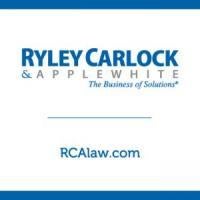Evaluating environmental risks associated with real estate transactions is a standard, and often standardized, practice for sophisticated real estate practitioners. However, in light of several recent developments - the uptick in transactions from the nadir of the recession, recent changes to risk evaluation standards, and a renewed regulatory emphasis on environmental compliance and enforcement in light of recent, high profile environmental releases such as the West Virginia chemical spill – now is an appropriate time for an update on identifying, evaluating, and minimizing environmental risks.
In this context, the term "environmental risks" refers most often to risks stemming from environmental conditions of a property; however it may also refer to risks based on regulatory programs concerning a property or resource limitations. The specific environmental risks associated with a particular real estate transaction vary greatly depending on the property in question and type of transaction. Generally speaking, every property should be evaluated for potential soil and groundwater contamination, both onsite and on surrounding properties. Historical records, regulatory files, and possible resource or use restrictions should also be studied, depending on the nature of the transaction and the party's particular interest.
Initial Risk Evaluations: Phase I Environmental Site Assessments and Transaction Screens
Often, a Phase I Environmental Site Assessment is the first and only environmental risk evaluation conducted for a real estate transaction. The objective of a Phase I assessment is to identify the presence or likely presence of hazardous substances or petroleum on, in or at a property due to a contaminant release or under conditions that pose a material threat of a future release. In real estate transactions, Phase I's are generally done for two reasons: (1) to evaluate, on a limited basis, environmental risks associated with a property; and (2) to satisfy one of the requirements for certain defenses to liability under the Comprehensive Environmental Response, Compensation, and Liability Act ("CERCLA"), such as the "all appropriate inquiries" requirement of the bona fide prospective purchaser ("BFPP") defense.
By now, many practitioners may already be familiar with changes made last year to the applicable standard for Phase I's, ASTM Standard E1527-13. After several fits and starts, on December 30, 2013, EPA approved ASTM Standard E1527-13 as meeting the all appropriate inquiries requirement for CERCLA liability protection. EPA, Final Rule, Amendment to Standards and Practices for All Appropriate Inquiries Under CERCLA, 78 Fed. Reg. 79,319 (Dec. 30, 2013). One of the key changes is that the revised standard makes clear that a site evaluation should assess the potential for vapor contamination in the same manner that soil or groundwater contamination risks are evaluated. This can be a significant risk, as vapor intrusion (i.e., the migration of subsurface contamination into an overlying building) is a high priority for EPA and state regulatory agencies. The revised standard also requires a more thorough review of regulatory agency records; however the impact of this requirement is minimal because in practice this type of thorough review was already being performed.
For parties who would prefer to conduct an initial evaluation that is even more limited than a Phase I, a Transaction Screen is an available option. ASTM just recently completed revisions to the standard for Transaction Screens, ASTM 31528-14, in February 2014. Among the revisions, one of the most significant is to make abundantly clear that a Transaction Screen is not a Phase I and will not provide CERCLA liability protection and may not provide a definitive evaluation of the presence or absence of environmental contamination at a given property. Specifically, the Transaction Screen is "intended for use on a voluntary basis by parties who wish to assess the environmental condition of commercial real estate where a Phase I Environmental Site Assessment is, initially, deemed to be unnecessary by the user and the parties do not seek CERCLA [BFPP or other Landowner Liability protections]." ASTM E1528-14, § 4.1. The prime candidates to obtain a Transaction Screen in lieu of a Phase I are commonly lenders or other parties who believe they already have CERCLA liability protections without needing to conduct all appropriate inquiries.
Environmental Risk for Lenders: CERCLA's Limited Lender Liability Protection
While lenders are generally exempt from liability arising from the contamination of the property prior to the date on which title vests in the lender-owner, the exemption applies only so long as the lender does not participate in the management of the property and holds indicia of ownership primarily to protect its security interest. It is important to note that lender liability protections are not absolute. For example, lenders are not protected from CERCLA liability if they are deemed to participate in the operational management of the property, or if they arrange for offsite transport or disposal of hazardous materials. Furthermore, lenders can lose liability protections after taking title through foreclosure or another mechanism. The lender liability protections apply only to liabilities created by CERCLA, and possibly by a corollary state statute, if one exists. These provisions provide no protection against tort liability or liabilities created under other statutory provisions such as the Clean Water Act or Clean Air Act. Accordingly, prior to taking title, lenders who want to preserve as many future options as possible with regard to the ownership and operation and/or sale of the property should conduct a Phase I, at a minimum, to evaluate environmental risks associated with the collateral at issue.
Additional Considerations
While a Phase I or a Transaction Screen serve important functions, both are limited tools. Neither addresses many potential non-CERCLA- or petroleum-related risks that may need to be considered at a particular property. These "non-scope" considerations include asbestos-containing materials, mold, wetlands, regulatory compliance, water resources, cultural and historic resources, endangered species, and occupational health and safety. Often, a Phase I will cover asbestos or mold, but few address many other non-scope considerations.
Depending on the real estate in question, these additional risks can be quite significant and evaluating them requires careful consideration of the unique factors for the property in question. While either a Transaction Screen or a Phase I can be a good starting point, it often needs to be supplemented with a more thorough evaluation that assesses other potential risks, which may lead to liabilities, transaction delays, and additional costs associated with owning, holding title to or operating an impaired property, and in some cases even limit future exit strategies.




 />i
/>i
